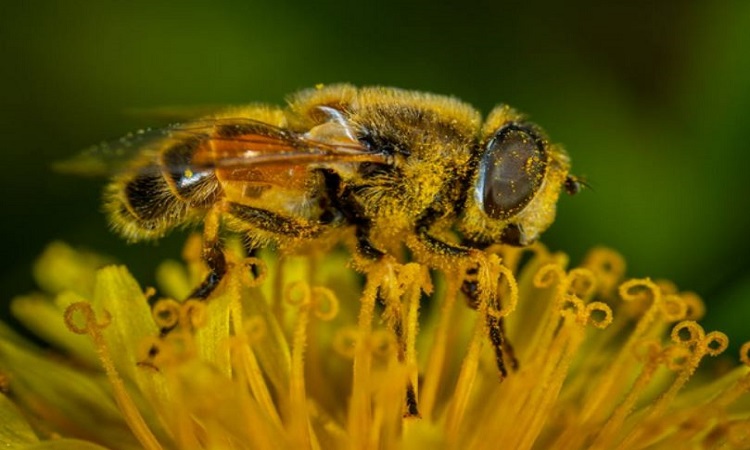 English
English

Researchers found when visual information is conflicting, bumblebees use smell to locate their nest. The study was published in Frontiers in Behavioral Neuroscience.’ Read further on Dynamite News:

Washington: Researchers found when visual information is conflicting, bumblebees use smell to locate their nest. The study was published in Frontiers in Behavioral Neuroscience.'
Bumblebees have an excellent vision: they have a pair of compound eyes that can distinguish UV and most colours except red, as well as three additional simple eyes that specialise in detecting polarised light. Their sense of smell dwarfs ours: it is approximately 100 times more sensitive, capable of sniffing out illegal drugs or explosives at airports, confirming pregnancy in women, and detecting cancers and diabetes in early-stage patients.
Researchers have discovered that bumblebees can use their sense of smell to find their nest. This is especially important when the landscape changes abruptly, such as when familiar visual landmarks are blown away by the wind.
"Here we show that bumblebees rely on their own scent marks, which they deposit at their nest entrance while leaving for a foraging trip, to find back home when the visual cues are not sufficiently reliable," said first author Sonja Eckel, a PhD student at the Department of Neurobiology of Bielefeld University in Germany.
Visual landmarks
Eckel and colleagues studied the homing behaviour of the buff-tailed bumblebee Bombus terrestris in the laboratory. In nature, these bumblebees nest in abandoned mouseholes, hidden under grass or leaves. Here, the foragers had learned to locate their nest entrance by visually orienting themselves against two sets of landmarks within a round enclosed flight arena, 150cm across and 85cm high. The first set consisted of three black vertical stripes - each 12cm wide and 85cm long - against the white background of the arena walls. The second, of three cylinders, each 2.5cm wide and 15cm high, arranged in a triangle around the entrance hole.
The arena floor provided no visual information, being covered with a random red-and-white pattern - presenting as black and white for bumblebees. After some practice, workers flew straight back to the entrance when returning from a visit to the outer foraging chamber, where they were provided with pollen and nectar.
Bumblebees possess multiple scent glands, which distribute chemicals all over their body. Previous research has shown that whenever they touch any surface, for example, that of their nest entrance, they passively leave scent marks. The researchers captured these scent marks by placing a glass ring around the entrance, which foragers tended to walk across when exiting or returning to the nest.
Tricking the bumblebees
Eckel et al. then tricked the bumblebees by abruptly changing the location of both sets of visual landmarks, independently of each other. Now, these gave conflicting information about the entrance's location, neither marking the correct spot. The true entrance was closed off and concealed - with success, as none of the returning foragers subsequently found it.
The researchers measured how long, and at which distance, returning foragers hovered around either false location for the entrance, based on the conflicting landmarks. They assumed that the longer a forager hovered around any spot, and the smaller her average flight distance to it, the more focused she was in that spot as the best candidate for the entrance's location.
Typically, foragers seemed equally focused on either false location, implying that they used both sets of visual landmarks to unsuccessfully try and relocate their nest. But a dramatic change occurred whenever the researchers placed the glass ring - carrying bumblebee scent marks - around either location. Now, foragers overwhelmingly focused on the false location suggested by the scent marks.
The researchers concluded that foragers use their sense of smell as well as a vision to find their way home, in particular when visual information is conflicting.
Bouquet of scents
"While visual information is perceived over larger distances and leads a bumblebee towards the approximate location of the nest, scent marks are used to pinpoint the exact location of the nest entrance in the near range. Most likely, physical contact is necessary to identify the scent," said Eckel.
"Our chemical analysis showed that this scent is a bouquet of hydrocarbons, fatty acids, and other substances, such as esters and alcohols. Many of these substances are known to be used by bumblebees in other behavioural contexts, also by other insect species."
"In our follow-up research, we want to investigate how different sensory cues are learnt and combined by bumblebees to allow them to discriminate different behaviorally relevant goals, such as the nest hole and food sources." (ANI)
No related posts found.
No related posts found.